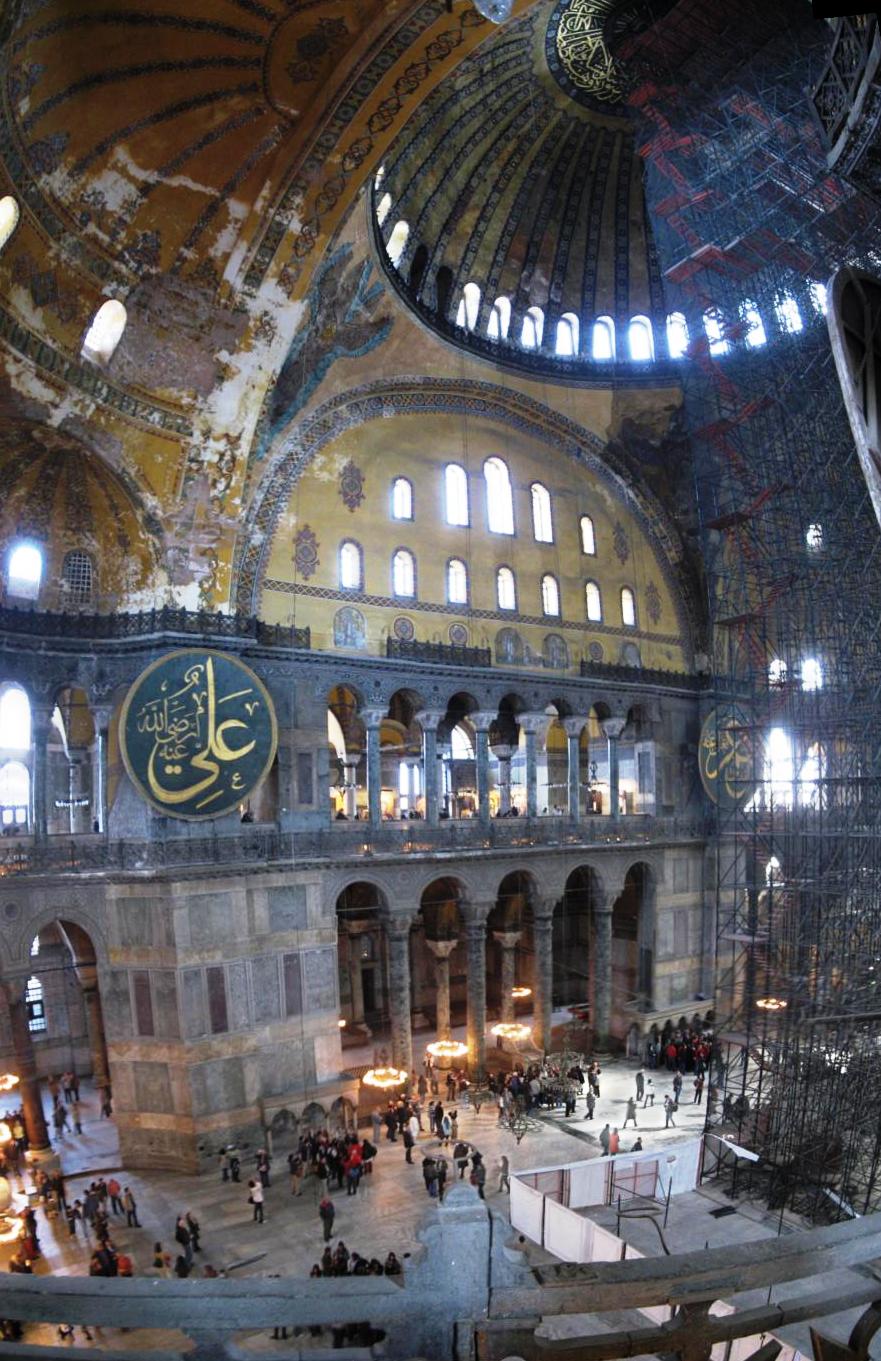 Hagia Sophia, also know as Ayasofya, was built as a church from AD 532-537, by emperor Justinian, in Itanbul of present-day Turkey (previously Constantinople). Its orginal architects were Isidore of Miletus and Anthemius of Tralles. When conquered by the Ottoman Turks in the 1400s, it was converted into a mosque and the fresco-covered walls were white-washed. In 1935, Turkey converted Hagia Sophia into a museum, which it remains today, with some of the original mosaics, including that of the Virgin and Child in the Apse, and emperors Alexander and Zoe.
Hagia Sophia, also know as Ayasofya, was built as a church from AD 532-537, by emperor Justinian, in Itanbul of present-day Turkey (previously Constantinople). Its orginal architects were Isidore of Miletus and Anthemius of Tralles. When conquered by the Ottoman Turks in the 1400s, it was converted into a mosque and the fresco-covered walls were white-washed. In 1935, Turkey converted Hagia Sophia into a museum, which it remains today, with some of the original mosaics, including that of the Virgin and Child in the Apse, and emperors Alexander and Zoe. The architecture of Hagia Sophia is classic Byzantine, with a wide nave (center aisle) below a large dome which is supported by pendentives. Pendentives are constructive devices which bear the weight of a dome, concentrating it on the four corners, and facilitate the change between a square space into a oval done. Upon conversion to a mosque, Hagia Sophia gained four minarets, or tall slender towers, designed by Mimar Sinan three of which were made of white marble, the other from red brick. The minerats served a purpose besides to call the church-goes to mass; they also counter-weight the structure, and it is thought without them the main structure would have started to collapse.
No comments:
Post a Comment